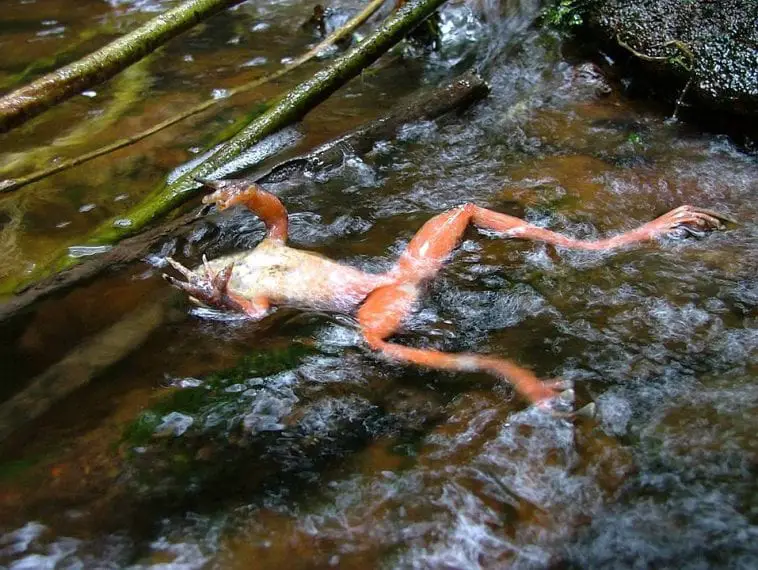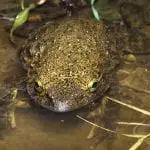All over the world, frog populations have been suffering and dealing with Batrachochytrium dendrobatidis or BD, which is a fungal pathogen that is known to cause chytridiomycosis, which is famous for the code Chytrid Disease. But how do you deal with this? According to some researchers in Australia, problems like this can be addressed by using salt.
What is Chytridiomycosis?
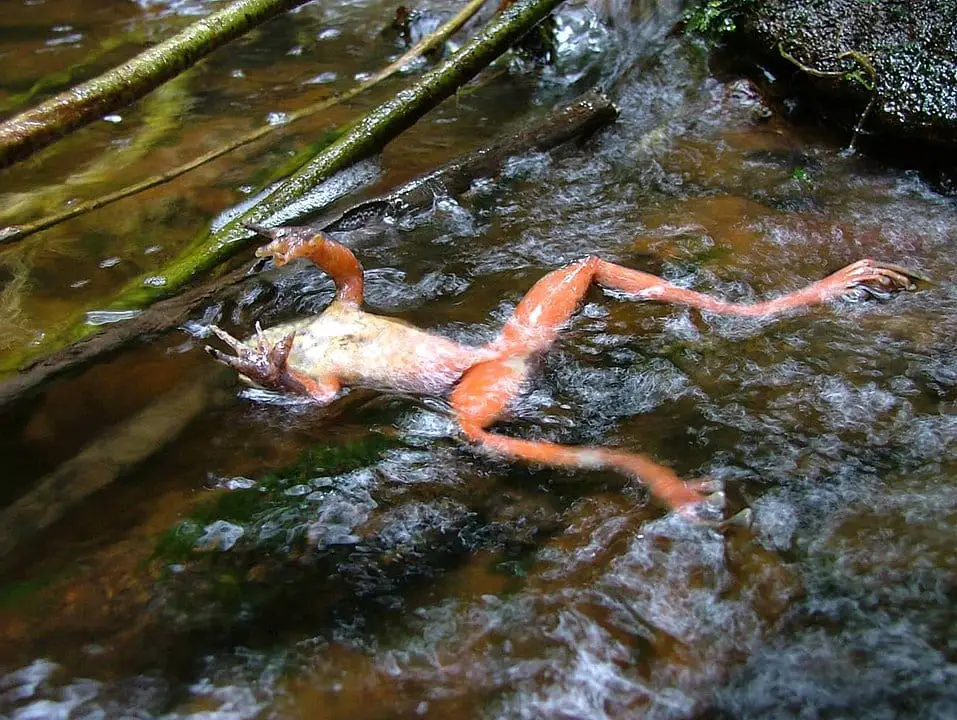
Chytrid disease is a problem that is incredibly prevalent in amphibian communities all over the world. It has impacted and brought damage to communities of frogs in North America, South America, Australia, Africa, and Europe. In fact, according to Dr. Simon Clulow, a researcher on the topic at the University of Newcastle, the chytrid fungus is available all over the world, and the only major climatically suitable landmass left on earth where it has not been detected in New Guinea.
The unfortunate thing is that chytrid fungus can be credited to be the main contributor to frog extinctions. Moreover, scientists and doctors are still having a hard time developing effective controls against the fungus, especially in wild populations.
A Deeper Look At Chytridiomycosis
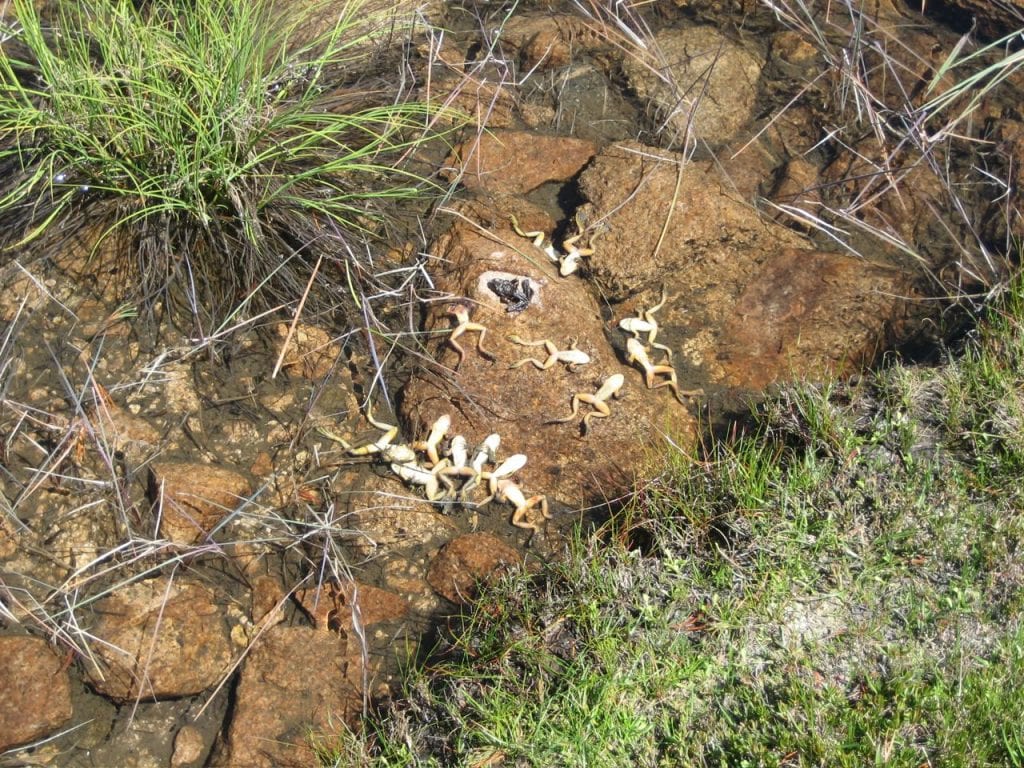
Chytridiomycosis can be defined as an infectious disease that can be found in amphibians, and it is mainly caused by the nonhypal zoosporic fungus, Batrachochytrium dendrobatidis and Batrachochytrium salamandrivorans. Aside from the usual territories that have been infected by this fungus, the rest of the New World is also facing the risk of the disease spreading to their territories within the upcoming years. There is also the problem that this fungus is capable of causing sporadic deaths in some populations of some amphibians, but it can cause 100 percent of deaths in other communities.
This disease was first discovered in 1993 in the dead and dying frogs found in Queensland, Australia. But, it was studied that their presence was already in the country starting in 1978 and it has spread all over the country. Eventually, it has expanded its reach and has been found present in Africa, North America, South America, New Zealand, and Oceania.
In New Zealand, Panama, and Australia, the chytrid fungus was found to suddenly appear and expand at the same time when the populations of frogs have extremely died down. However, some states say that the chytrid fungus can be found naturally and it was identified quite late because it can become more prevalent and virulent in the environment, or because the host populations have become a little less resistant to the disease.
The Role of Climate Change on Chytrid Fungus
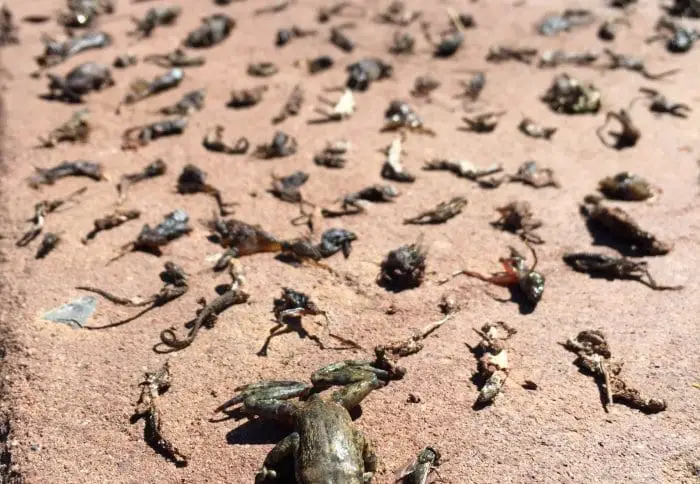
In a study, some people suggest that the huge difference in global temperatures can be responsible for the increase in the spread of chytrid fungus in amphibian communities all over the world. The hotter temperatures have been credited to increase the evaporation in certain forest environments, which also results in the formation of clouds. Thus, when the cloud coverings increase, it blocks the sun and decreases the temperatures during the day. At night, the clouds also cover the environment, and it also serves as the insulation to raise the night time temperatures. These temperature changes also provide additional reproduction of the Chytrid fungus, as the ideal temperature for these fungi is 17 degrees to 25 degrees Celsius or 63 degrees Fahrenheit and 77 degrees Fahrenheit.
How Chytrid Fungus Gets Transmitted and Progressed
The pathogen of this chytrid fungus, which is borne from the water, disperses zoospores into the environment. Then, they utilize flagella so that they can move through different water systems until they can enter a new host. They enter their new host and enter them cutaneously. The lifestyle continues until there are new ones produced, and it exists in the environment or reinfects the same animal host.
Once the host gets infected by the fungus, it can eventually develop the chytridiomycosis disease, but not all infected hosts can develop this. It is believed to be transmitted through the direct contact of hosts or through the use of an intermediate host.
The entire journey of the chytridiomycosis involves the following: zoospores encounter the skin of the amphibian. This will then give rise to sporangia, which then will produce new zoospores. The chytridiomycosis will also progress as these new zoospores infect the host again. Then, there will be morphological changes that will be felt on the amphibians. This includes accumulations of the sloughed skin throughout your pet’s body, small ulcers or hemorrhaging, slight roughening of the surface, minute skin tags, convulsions, an extension of hind limbs, and a reddening of the ventral skin. Additionally, some behavioral changes can be felt, too. It would include abnormal posture, a loss of rightful reflexes, a failure to flee, a failure to seek shelter, and some lethargy.
The Effect Of Salt On Chytrid Fungus
To test out their hypothesis, Dr. Clulow and his team of researchers released 168 captive-bred frogs that are facing the problem and 288 frogs that are uninfected into 16 outdoor experimental areas under controlled situations. In these areas, the salinity of the water is also controlled. The study lasted for 25 weeks, starting from Australia’s mid-austral winter until mid-austral summer.
In the treatment, these scientists use simple pool salt, which is very easy to access and are very affordable. If you look at it, this treatment plan is very feasible because people can overcome these hurdles for their frogs, even on countries and territories where resources are limited, and many animals are at risk for extinction.
The great thing about this treatment is that it can be done by people all over the world, especially for people who work in environmental science and environmental conservation. The research team is hoping that this technique can be implemented quickly so that many species can be saved, especially frogs, which are undeniably facing a worrying trajectory.
The results of their study show this: when the salinity of the water is decreased from c.0.5 ppt to 3-5-4.5 ppt, the transmission of the fungus was lessened between the infected animals to the uninfected animals. Because of these findings, the end result is significantly lesser deaths in the mesocosms or the experimental areas where the salt levels are elevated.
Additionally, the researchers took note that when there is a significant increase in the water temperature, just like how it is in the summer season, the increase leads to all the frogs being cleared of having the fungus.
In another experiment of the researchers, they transferred the location of green and golden bell frogs that are bred in captivity, and they released them into habitats where they can add salt into the water. This experiment has resulted in an increased survival rate of 70 percent.
There is no denying that this study showcases an incredible outcome that, at the very least, gives scientists a usable option against chytrid disease in the wild. Basically, this experiment has established that the simple act of elevating the salt levels very slightly, the disease caused by the chytrid fungus can be blocked from spreading, and the transmission can be intensely lower from one frog to another.
According to this team of scientists, they still plan on collaborating with other scientists so that further testing on their treatment plan can be addressed. There is still a long way to go on this experiment, but it is a commendable discovery, indeed.

